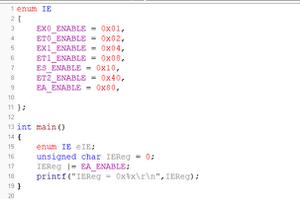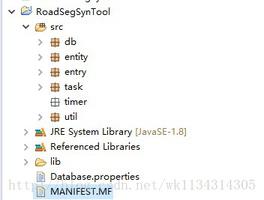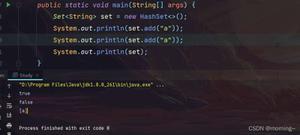Java_Java Compiler 应用实例

一直在用JDK1.5, 一直搞不清楚JDK1.6有啥特性, 就翻了翻, 发现这个Compiler API(JSR 199)动态编译Java源文件功能很有意思. Compiler API如果和反射功能一起使用, 就可以实现java源代码的动态编译并执行这些代码,有点动态语言的特征. 利用这些API普通用户也可以方便的开发自己的编译器,动态生成代码,编译并运行. 本文就通过一个动态编译并运行源文件的例子简单说明下Compile API的基本功能, 有兴趣的可以深入研究下. 本实例的完成工程代码可以从这里 下载: http://dl.iteye.com/topics/download/0807c557-4f0d-3aba-956f-9fe5c9b83962
实例中实现的功能描述:
1. 使用JavaCompiler对象的run方法编译java源代码,并在源代码所在目录生成对应的class文件
2. 使用JavaCompiler对象的getTask方法编译java源代码,并将对应的class文件生成到指定目录, 并执行所生成类中指定的"printClassName"方法
环境准备:
首先回顾一下JDK, JRE,JVM的概念和关系:
JRE是java的运行环境, 说白了有JRE才能运行java类; 同时java类是运行于虚拟机(JVM)上的, 其实虚拟机是JRE的一部分, 具体来讲,在windows上就是JRE下面的一个JVM.dll文件; JDK就是java开发工具箱, 具有编译java类的功能和运行java类的功能(自身包含了一个JRE).
知道了JDK,JRE,JVM的关系,我们就应该明白,如果要在eclipse里面使用java的编译功能必须在eclipse里面使用JDK作为Library,否则在eclipse中获取不了JavaCompiler的对象. 设置如下图:
懒得找JDK1.6,我就直接下载了个1.7装了下,然后开发工具使用MyEclipse (当然用的是免费版的 -:)).
在看我们的实例分析及源码:
首先看下run方法编译java源文件, run方法比较简单,但不能指定输出路径,监控错误信息, 调用后就在源码所在目录生成class文件,run方法的声明如下:
[plain] view plain copy
- int run(InputStream in,
- OutputStream out,
- OutputStream err,
- String... arguments)使用给定 I/O 通道和参数运行工具。按照惯例,工具如果运行成功,则返回 0;如果出现错误,则返回非 0 值。任何生成的诊断都将以某种未指定的格式写入 out 或 err。
- 参数:
- in - “标准”输入;如果为 null,则使用 System.in
- out - “标准”输出;如果为 null,则使用 System.out
- err - “标准”错误;如果为 null,则使用 System.err
- arguments - 要传递给工具的参数
- 返回:
- 如果成功,则返回 0;否则返回非 0 值
- 抛出:
- NullPointerException - 如果参数数组包含任何 null 元素。
实例源码,注释比较详细,不再解释,Compiler.java中代码片段:[java] view plain copy
- /**
- * Author: Jiangtao He; Email: ross.jiangtao.he@gmail.com
- * @param sFullFileName: the java source file name with full path
- * @return bRet: true-compile successfully, false - compile unsuccessfully
- * Description: Compile java source file to java class with run method
- */
- public boolean compileFile(String sFullFileName)
- {
- boolean bRet = false ;
- // get compiler
- JavaCompiler oJavaCompiler = ToolProvider.getSystemJavaCompiler();
- // compile the java source code by run method
- int iCompileRet = oJavaCompiler.run( null , null , null , sFullFileName);
- // set compile result
- if ( 0 == iCompileRet)
- {
- bRet = true ;
- }
- return bRet;
- }
再看下我们的getTask方法编译java源代码, 这个方法其实是构造了一个JavaCompiler.CompilationTask对象, 然后在调用这个对象的call方法, 在构造对象的过程中, 可以指定class的生成路径,监控错误信息,调用过程如下:
1) 生成JavaCompiler对象,用于构造CompilationTask对象,并编译java源代码
2) 构造DiagnosticCollector对象,用于存储诊断信息
3) 构造oStandardJavaFileManager对象,用于设置类的生成路径, 为了方便使用java反射方法,我直接将本实例中的输出路径设置为工程bin目录.实际应用中应根据场景生成道不同的目录--比如可以根据配置或者包名来做.
4) 生成源文件迭代器Iterable对象, 用于存储java源代码文件完整的路径
5) 根据上面生成的对象, 调用JavaCompiler对象的getTask构造CompilationTask对象, 并调用其call方法,编译源代码
再看下getTask方法的声明:
[plain] view plain copy
- JavaCompiler.CompilationTask getTask(Writer out,
- JavaFileManager fileManager,
- DiagnosticListener<? super JavaFileObject> diagnosticListener,
- Iterable<String> options,
- Iterable<String> classes,
- Iterable<? extends JavaFileObject> compilationUnits) 使用给定组件和参数创建编译任务的 future。该编译可能没有完成,正如 CompilationTask 接口中所述。
- 如果提供了文件管理器,则它必须能够处理 StandardLocation 中定义的所有位置。
- 参数:
- out - 用于来自编译器的其他输出的 Writer;如果为 null,则使用 System.err
- fileManager - 文件管理器;如果为 null,则使用编译器的标准文件管理器
- diagnosticListener - 诊断侦听器;如果为 null,则使用编译器的默认方法报告诊断信息
- options - 编译器选项;null 表示没有选项
- classes - 类名称(用于注释处理),null 表示没有类名称
- compilationUnits - 要编译的编译单元;null 表示没有编译单元
- 返回:
- 表示编译的对象
- 抛出:
- RuntimeException - 如果在用户提供的组件中发生不可恢复的错误。cause 为用户代码中的错误。
- IllegalArgumentException - 如果给定的任一编译单元具有不同于 source 的类型
源码清单如下,Compiler.java中代码片段:[java] view plain copy
- /**
- * Author: Jiangtao He; Email: ross.jiangtao.he@gmail.com
- * @param sFullFileName: the java source file name with full path
- * @param sOutputPath: the output path of java class file
- * @return bRet: true-compile successfully, false - compile unsuccessfully
- * Description: Compile java source file to java class with getTask
- * method, it can specify the class output path and catch diagnostic
- * information
- * @throws IOException
- */
- public boolean compileFile(String sFullFileName, String sOutputPath) throws IOException
- {
- boolean bRet = false ;
- // get compiler
- JavaCompiler oJavaCompiler = ToolProvider.getSystemJavaCompiler();
- // define the diagnostic object, which will be used to save the
- // diagnostic information
- DiagnosticCollector<JavaFileObject> oDiagnosticCollector = new DiagnosticCollector<JavaFileObject>();
- // get StandardJavaFileManager object, and set the diagnostic for the
- // object
- StandardJavaFileManager oStandardJavaFileManager = oJavaCompiler
- .getStandardFileManager(oDiagnosticCollector, null , null );
- // set class output location
- Location oLocation = StandardLocation.CLASS_OUTPUT;
- try
- {
- oStandardJavaFileManager.setLocation(oLocation, Arrays
- .asList(new File[] { new File(sOutputPath) }));
- // get JavaFileObject object, it will specify the java source file.
- Iterable<? extends JavaFileObject> oItJavaFileObject = oStandardJavaFileManager
- .getJavaFileObjectsFromFiles(Arrays.asList(new File(
- sFullFileName)));
- // compile the java source code by using CompilationTask's call
- // method
- bRet = oJavaCompiler.getTask(null , oStandardJavaFileManager,
- oDiagnosticCollector, null , null , oItJavaFileObject).call();
- //print the Diagnostic's information
- for (Diagnostic oDiagnostic : oDiagnosticCollector
- .getDiagnostics())
- {
- System.out.println("Error on line: "
- + oDiagnostic.getLineNumber() + "; URI: "
- + oDiagnostic.getSource().toString());
- }
- }
- catch (IOException e)
- {
- //exception process
- System.out.println("IO Exception: " + e);
- throw e;
- }
- finally
- {
- //close file manager
- if ( null != oStandardJavaFileManager)
- {
- oStandardJavaFileManager.close();
- }
- }
- return bRet;
- }
编译的方法就这两个简单吧, 下面我们测试下这两个方法:
首先, 声明下我们的compiler类的对象,初始化下编译的类和输出类的路径,MyMain.java中代码片段:
[plain] view plain copy
- // get compiler object
- Compiler oCompiler = new Compiler();
- // the java source file name with full path
- String sFullFileName = "E:\\myspace\\CompilerSample\\Sample.java";
- // define the output path of java class, since this demo is ran into
- // eclipse, so set it as bin
- String sOutputPath = "bin/";
测试run方法:[java] view plain copy
- // Compile java source file to java class with run method
- boolean bRet = oCompiler.compileFile(sFullFileName);
- // print result
- if (bRet)
- {
- System.out.println("Compile the source code \"" + sFullFileName
- + "\" successfully" );
- }
- else
- {
- System.out.println("Compile the source code \"" + sFullFileName
- + "\" unsuccessfully" );
- }
run方法测试,控制台信息:
[plain] view plain copy
- Compile the source code "E:\myspace\CompilerSample\Sample.java" successfully
生成的类文件抓图:测试getTask方法,并利用java反射运行所生成类中的"printClassName"方法:
[java] view plain copy
- // Compile java source file, and output the class file into specified
- // path
- bRet = oCompiler.compileFile(sFullFileName, sOutputPath);
- // print result
- if (bRet)
- {
- System.out.println("Compile the source code \"" + sFullFileName
- + "\" successfully" );
- // if compile success, then execute the printClassName method of the
- // compiled class
- System.out
- .println("Execute the printClassName method of the compiled class: " );
- System.out.print(" " );
- // load the class
- Class oClass = Class.forName("Sample" );
- // new an object of sample class
- Object oObject = oClass.newInstance();
- // get object of printClassName method
- Method oMethod = oClass.getMethod("printClassName" );
- oMethod.invoke(oObject);
- }
- else
- {
- System.out.println("Compile the source code \"" + sFullFileName
- + "\" unsuccessfully" );
- }
- }
运行测试方法后,控制台打印信息:[plain] view plain copy
- Compile the source code "E:\myspace\CompilerSample\Sample.java" successfully
- Execute the printClassName method of the compiled class:
- Print the class name: Sample
生成的类文件抓图:
至此, 通过java Compiler API动态编译并运行源文件的例子就完了.
以上是 Java_Java Compiler 应用实例 的全部内容, 来源链接: utcz.com/z/393166.html









